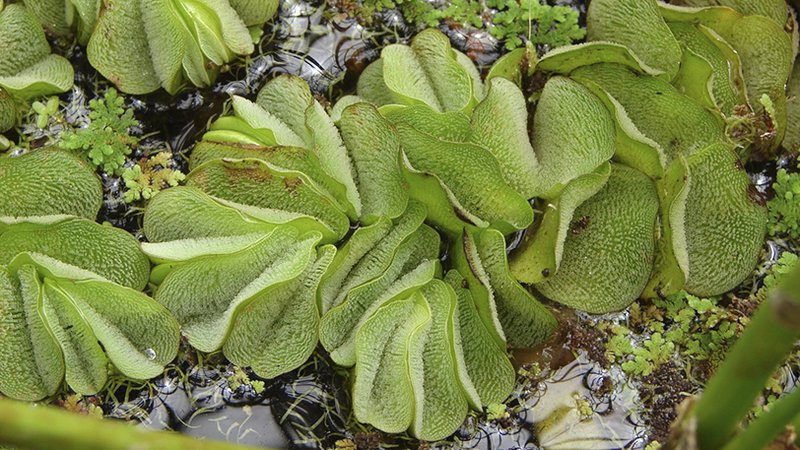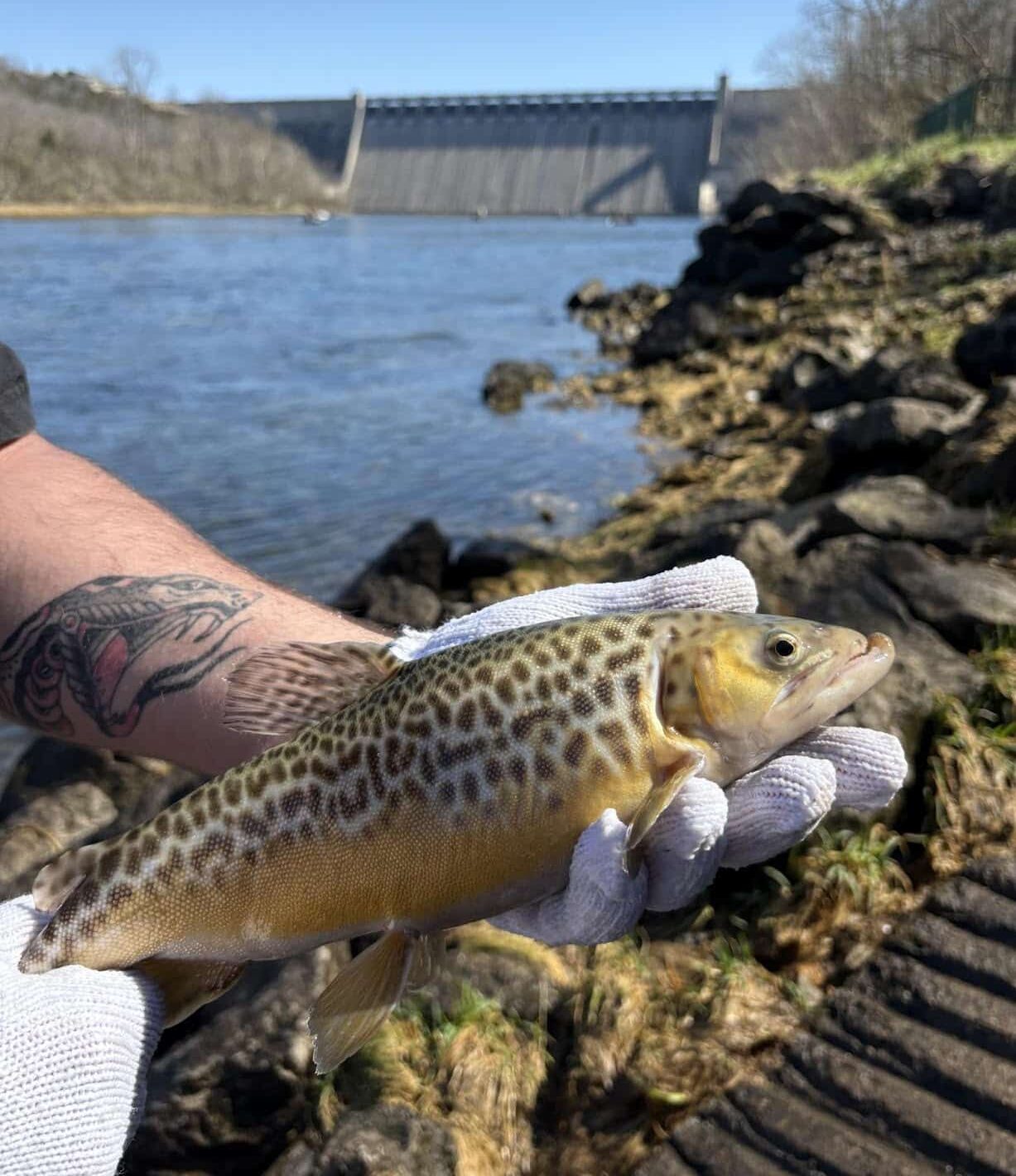Invasive aquatic plant found at Lake Erling
ON 01-23-2019

Jan. 23, 2019
Randy Zellers
Assistant Chief of Communications
BRADLEY — Biologists with the Arkansas Game and Fish Commission have confirmed the presence of Giant Salvinia in a small portion of Lake Erling in Lafayette County. This is the second occurrence of the invasive plant in Arkansas, with the first being in Smith Park Lake in Miller County in 2017.
Giant Salvinia is a free-floating South American plant, similar in appearance to duckweed but much larger. It stays at the water’s surface and can rapidly cover a large area and choke out all life in the water beneath if left unchecked. According to Sea Grant Louisiana, under ideal conditions, a single plant of Giant Salvinia can multiply to cover 40 square miles of surface area in only three months.
The plant was identified just before Christmas by a local angler and reported to the AGRED Foundation, a non-profit organization and owner of the lake. They reported the find to The Arkansas Game and Fish Commission’s Camden Regional Office. Fisheries biologists then investigated the situation and confirmed the presence of the plant at the end of December.
“We do not own the lake, but have an agreement with AGRED to support them with technical assistance to the fishery,” said Andy Yung, AGFC district fisheries supervisor. “And with it being an invasive species like Giant Salvinia, we want to do whatever we can to prevent it from being established in Arkansas.”
Yung says Giant Salvinia has been an extremely difficult plant for lake managers in Louisiana and Texas to fight because of its extremely fast growth rate. The species can overtake an area, completely blocking light penetration and crowding out all other vegetation and even fish, essentially suffocating a fishery.
“With recent milder winters, we’ve seen some evidence of it creeping north and we’re doing whatever we can to keep it at bay,” Yung said.
Yung says it’s particularly troubling to see the plant in Erling, a popular fishing destination, where it has the potential to hitch a ride on anglers’ boats, trailers and equipment and be unknowingly transported to other nearby lakes.
“With Lake Columbia not too far away, we’re very concerned that it could end up there,” Yung said. “Columbia is a water-supply reservoir, so if it gets there, our ability to use any sorts of herbicides is eliminated and we’ll really be fighting a losing battle.”
Yung says the most likely source of the infestation was from an angler or hunter transporting the plant to the lake accidentally after boating in an area where the plant had already become established.
“We’ve been talking to our counterparts in Texas quite a bit about Giant Salvinia, and they believe it’s being spread just as much by waterfowl hunters as it is anglers,” Yung said. “Many of the places where it is popping up are much more popular as duck-hunting areas than they are fishing destinations.”
Eric Brinkman, AGFC district fisheries supervisor in the AGFC’s Hope Office, says this also was a likely scenario for the states’ first occurrence of the plant in 2017 in his district.
“We hunt and fish too, and it’s really easy to see how a small bit of the plant can get stuck on a boat trailer, in a prop or even hang on to decoys, decoy weights and other equipment duck hunters use,”
Brinkman said. “A lot of our hunters just aren’t aware of the issue, or they may think that because it’s winter that the plants are dead and won’t spread. Either way, we need all hunters and anglers to pay special attention to their equipment and remove all vegetation and mud from their gear before moving to a new location.”
Yung says plans are already in the works with AGRED to begin lowering Lake Erling enough to expose all known areas of Giant Salvinia to winter weather.
“We’ve helped them purchase the needed herbicides and surfactants to spray the infested areas,” Yung said. “Dropping the water level will make it much more effective and expose much more of the plants to the herbicide and any freezing weather we will have. Hopefully we can help them stop this infestation as soon as possible and prevent any further spread of the plant.”
Photo credit: Troy Evans, Great Smoky Mountains National Park, Bugwood.org
Recent News

Catch a tiger by the tail(water)
Mar. 31, 2025
Subscribe to Our Weekly Newsletter E-mails
Don’t miss another issue. Sign up now to receive the AGFC Wildlife Weekly Newsletter in your mailbox every Wednesday afternoon (Waterfowl Reports are published weekly during waterfowl season and periodically outside the season). Fishing Reports arrive on Thursdays. Fill in the following fields and hit submit. Thanks, and welcome!

